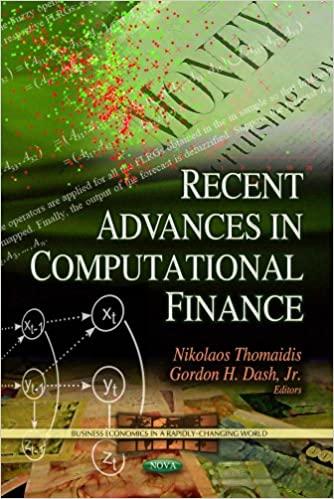Question
SeaHornet Boards currently pays out 50 percent of net income as dividends to Tad and the other original investors, and it has a 20 percent

SeaHornet Boards currently pays out 50 percent of net income as dividends to Tad and the other original investors, and it has a 20 percent tax rate.
REQUIREMENTS:
As the financial analyst for SeaHornet Boards, your job is to prepare the six financial statements listed below. Then, based on the statements you prepared, answer the two questions listed below.
Financial Statements
1. Income statement for 2010 and 2011 (10 points).
2. Balance sheet for 2010 and 2011 (10 points).
3. Operating cash flow for 2010 and 2011 (10 points).
4. Cash flow from assets for 2011 (10 points).
5. Cash flow to creditors for 2011 (10 points).
6. Cash flow to stockholders for 2011 (10 points).
Questions
Q1. How would you describe SeaHornet Boards cash flows for 2011? Write a brief discussion (20 points).
Q2. In light of your discussion in the previous question, what do you think about Tads expansion plans (20 points)?
PLEASE DO NOT COPY OTHER CHEGG ANSWERS, THE NUMBERS AND YEARS ARE DIFFERENT!
exl Ellec Cash Flows and Financial Statements at SeaHornet Boards, Inc. SeaHornet Boards is a small company that manufactures and sells surfboards in Malibu. Tad Marks, the founder of the company, is in charge of the design and sale of the surfboards, but his background is in surfing, not business. As a result, the company's financial records are not well maintained. The initial investment in SeaHornet Boards was provided by Tad and his friends and family. Because the initial investment was relatively small, and the company has made surfboards only for its own store, the investors haven't required detailed financial statements from Tad. But thanks to word of mouth among professional surfers, sales have picked up recently, and Tad is considering a major expansion. His plans include opening another surfboard store in Hawaii, as well as supplying his "sticks (surfer lingo for boards) to other sellers. Tad's expansion plans require a significant investment, which he plans to finance with a combination of additional funds from outsiders plus some money borrowed from banks. Naturally, the new investors and creditors require more organized and detailed financial statements than Tad has previously prepared. At the urging of his investors, Tad has hired a financial analyst to evaluate the performance of the company over the past year. After rooting through old bank statements, sales receipts, tax returns, and other records, the financial analyst has assembled the following information: Cost of goods sold Cash Depreciation Interest expense Selling & Administrative Accounts payable Net fixed assets Sales Accounts receivable Notes payable Long-term debt Inventory New equity 2010 $126,038 18,187 35,581 8,235 24,787 33,143 156,975 249,259 12,887 13,651 79,235 27,619 2011 $ 159,143 27,478 40,217 9,366 32,352 37,404 191,250 303,392 16,717 14,997 91,195 37,716 15,000 Tax rate Dividend percentage 20% 50% exl Ellec Cash Flows and Financial Statements at SeaHornet Boards, Inc. SeaHornet Boards is a small company that manufactures and sells surfboards in Malibu. Tad Marks, the founder of the company, is in charge of the design and sale of the surfboards, but his background is in surfing, not business. As a result, the company's financial records are not well maintained. The initial investment in SeaHornet Boards was provided by Tad and his friends and family. Because the initial investment was relatively small, and the company has made surfboards only for its own store, the investors haven't required detailed financial statements from Tad. But thanks to word of mouth among professional surfers, sales have picked up recently, and Tad is considering a major expansion. His plans include opening another surfboard store in Hawaii, as well as supplying his "sticks (surfer lingo for boards) to other sellers. Tad's expansion plans require a significant investment, which he plans to finance with a combination of additional funds from outsiders plus some money borrowed from banks. Naturally, the new investors and creditors require more organized and detailed financial statements than Tad has previously prepared. At the urging of his investors, Tad has hired a financial analyst to evaluate the performance of the company over the past year. After rooting through old bank statements, sales receipts, tax returns, and other records, the financial analyst has assembled the following information: Cost of goods sold Cash Depreciation Interest expense Selling & Administrative Accounts payable Net fixed assets Sales Accounts receivable Notes payable Long-term debt Inventory New equity 2010 $126,038 18,187 35,581 8,235 24,787 33,143 156,975 249,259 12,887 13,651 79,235 27,619 2011 $ 159,143 27,478 40,217 9,366 32,352 37,404 191,250 303,392 16,717 14,997 91,195 37,716 15,000 Tax rate Dividend percentage 20% 50%Step by Step Solution
There are 3 Steps involved in it
Step: 1

Get Instant Access to Expert-Tailored Solutions
See step-by-step solutions with expert insights and AI powered tools for academic success
Step: 2

Step: 3

Ace Your Homework with AI
Get the answers you need in no time with our AI-driven, step-by-step assistance
Get Started


